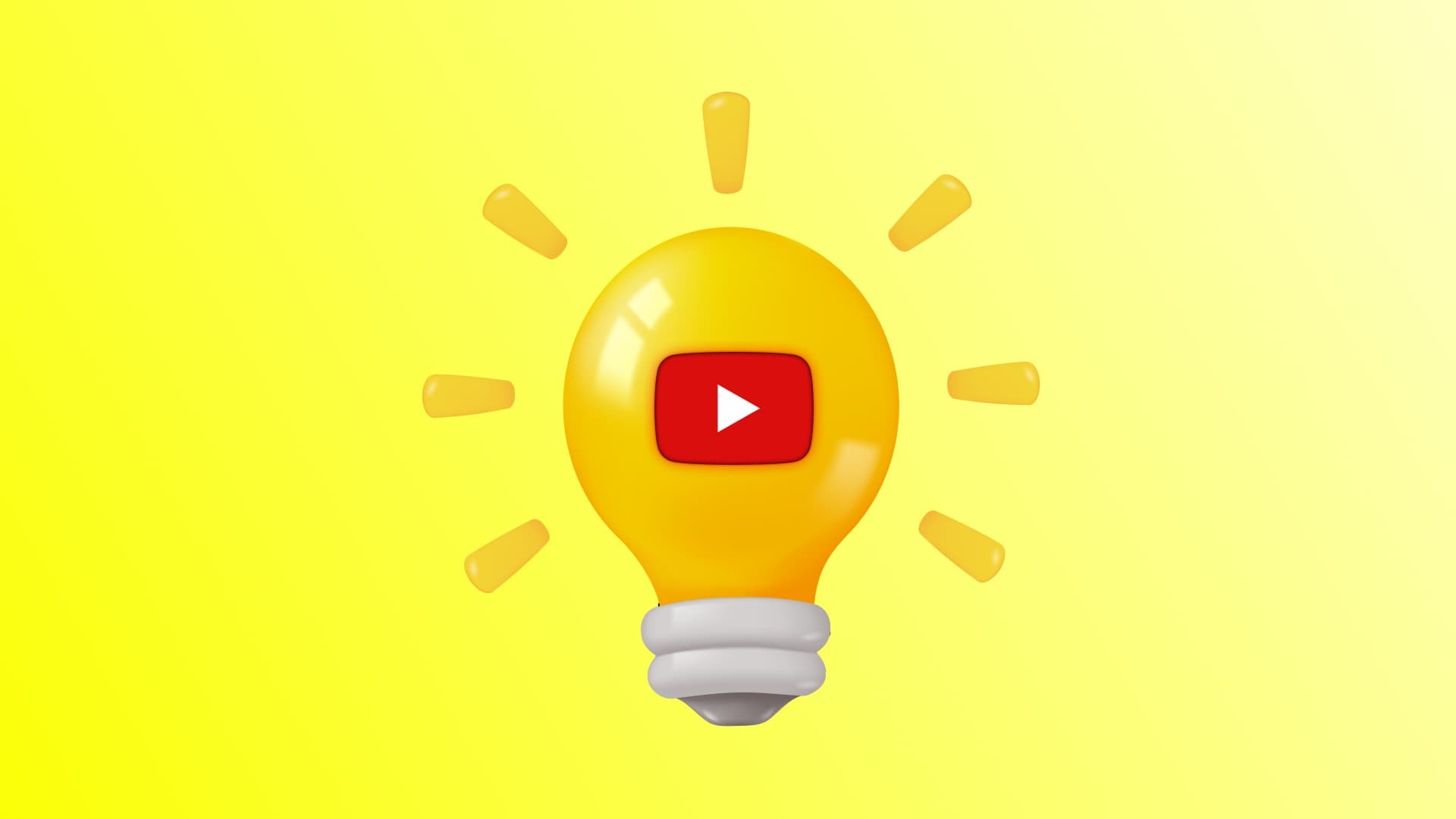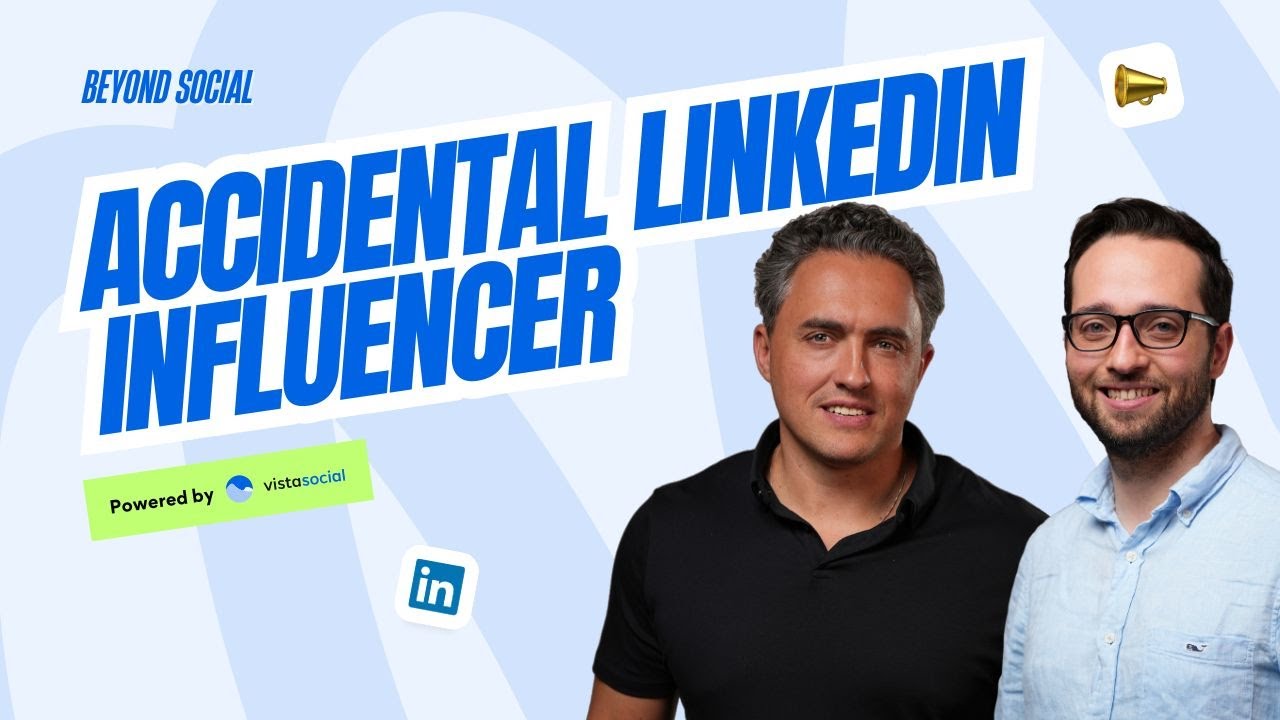New
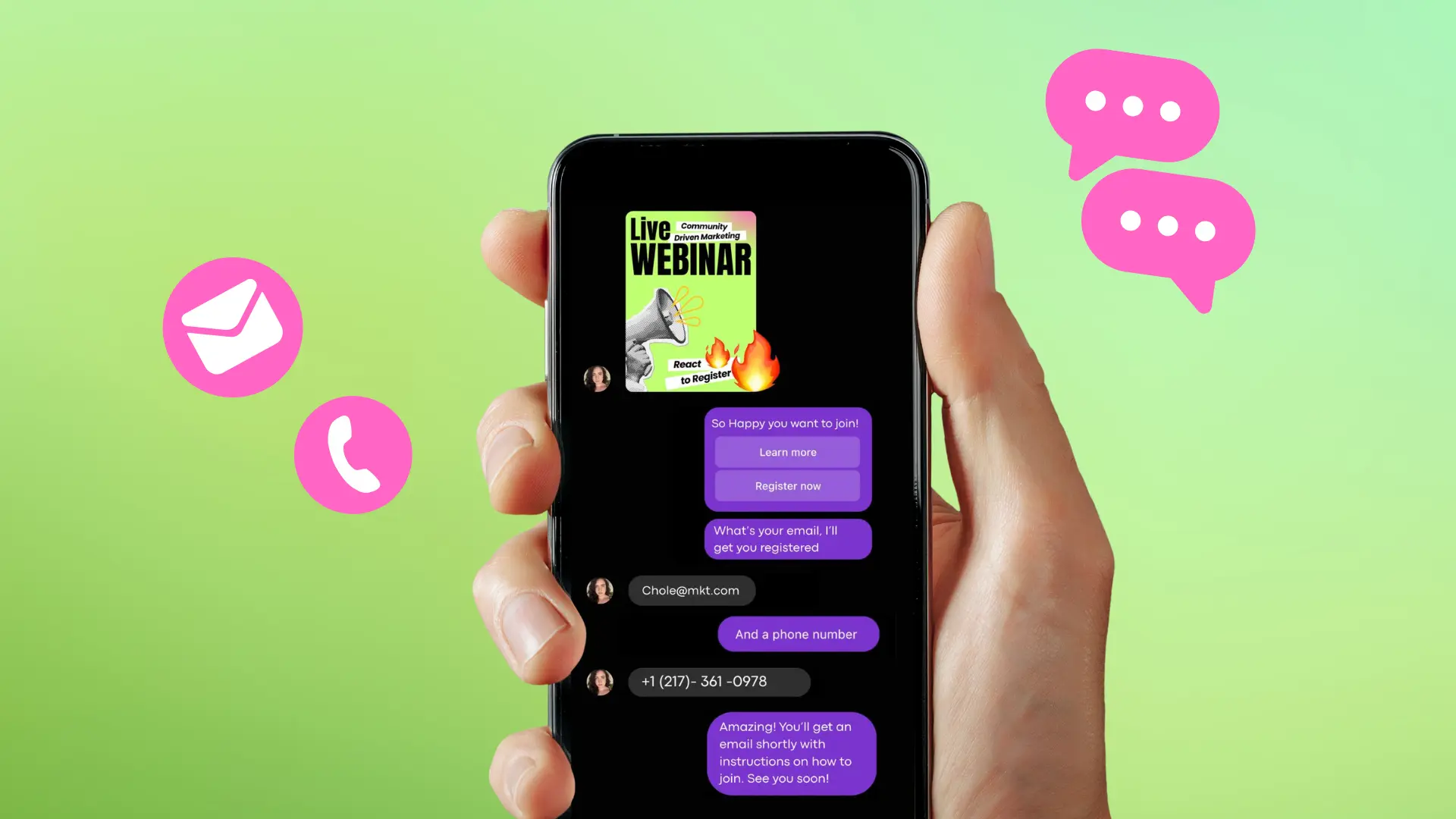
Turn Your DMs Into Lead Gen!
Learn how to collect lead data from your DMs such as email addresses, phone numbers, and more right from your social inbox. If you are not yet automating your DMs your competitors are outpacing you.
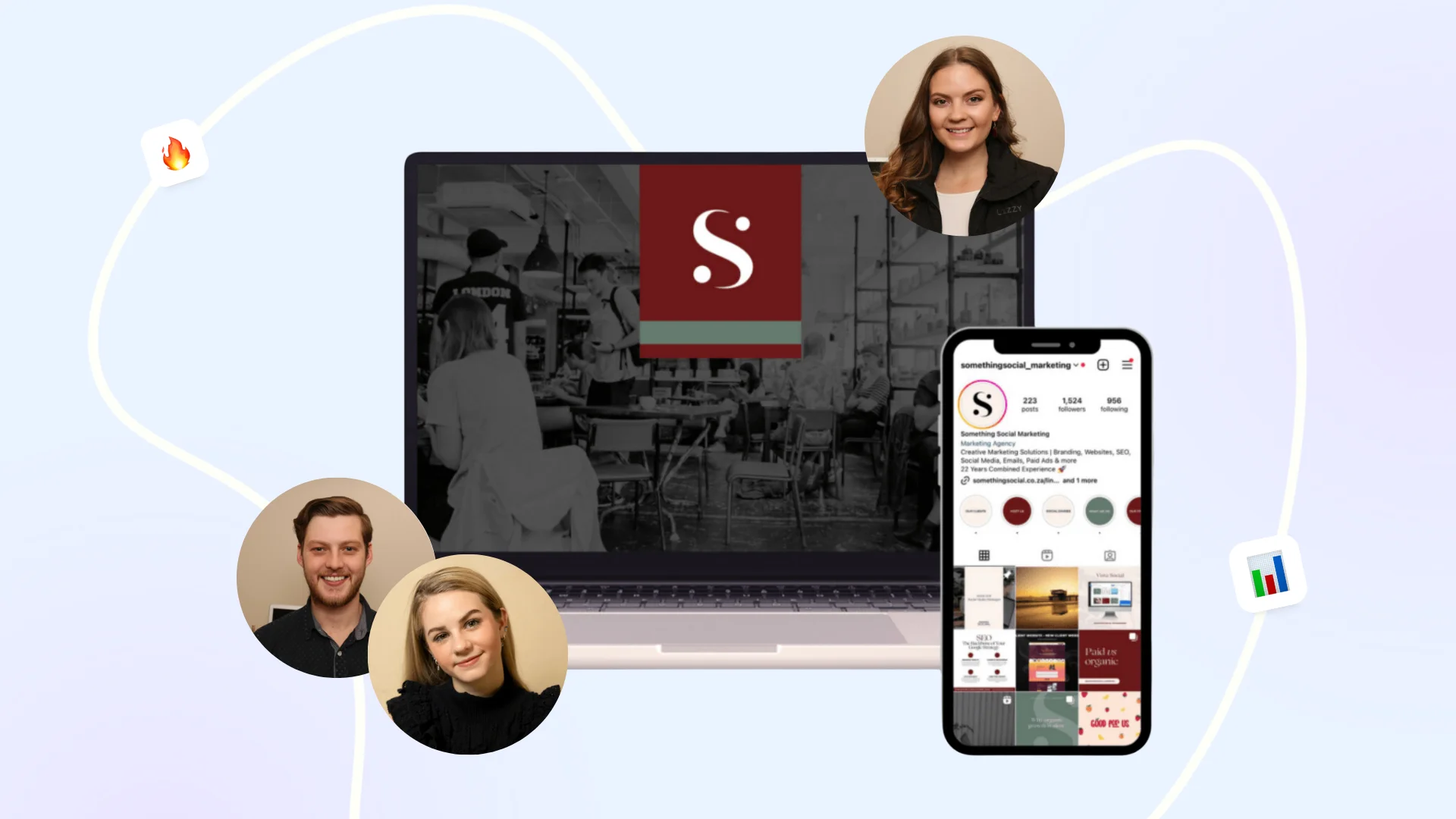
How Something Social Saved 75% of Their Time and Increased Revenue by 15%
See how a fast-growing agency improved operations, cut down hours of manual work, and unlocked new revenue opportunities with Vista Social.
New
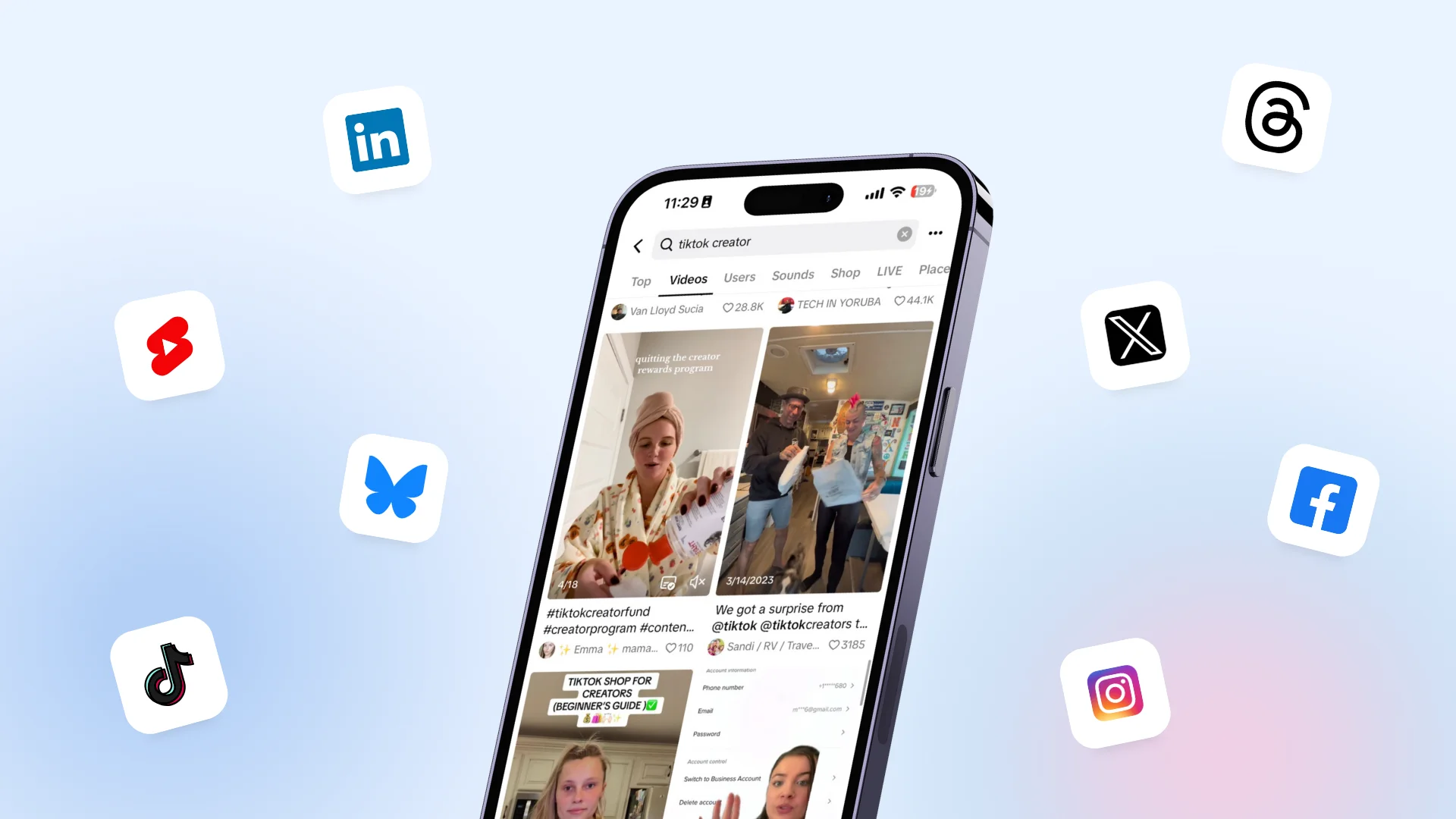
50 Unique Social Media Ideas for Consistent Content Creation
Discover 50 unique social media post ideas to engage your audience, grow your brand, and maintain a consistent content strategy with ease!
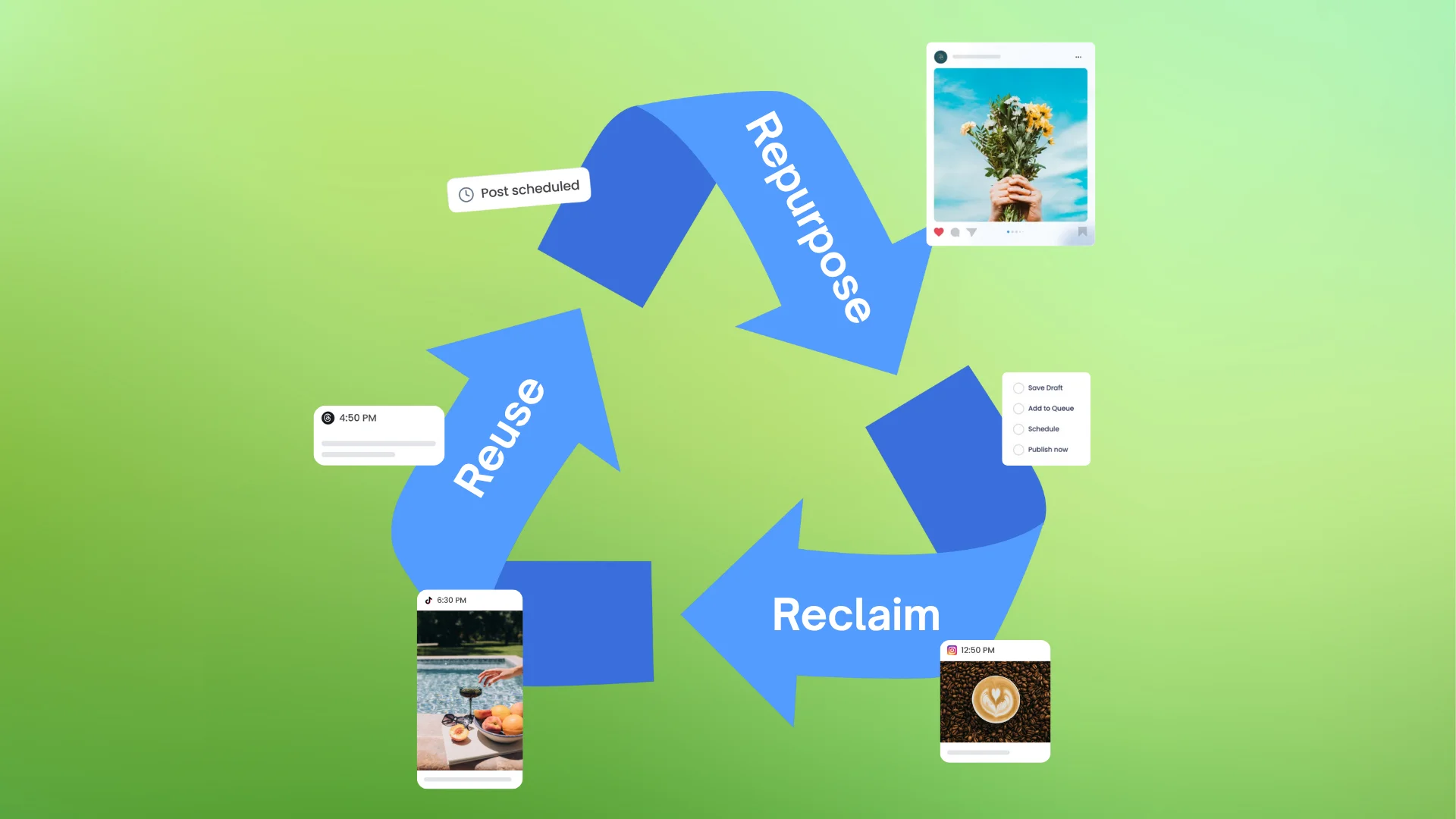
Mastering Content Reuse: The Key to a Consistent and Sustainable Posting Strategy

Table of Content

“There has been, and maybe still continues to be, a little bit of controversy on this topic, and I don’t think we’re going to shy away from talking about that. There are definitely conversations on social media about whether you should boost or not boost. It’s hard to say; I think they’re kind of both on the “you should boost” side.
Table of contents
What Is Social Media Boosting?
Vines Social has recently released the boosting feature. We want to talk a little bit about that today. Do you mind kind of just starting off by explaining what boosting is?
Within Vines Social, a lot of our core function is posting organic content for customers. Customers use it to post organic content across a variety of platforms. It has always been the desire of many customers to also be able to boost campaign strength, meaning to also turn to paid ads effectively. Today, we’ve released a version that allows you to boost it across Facebook, Instagram, TikTok, LinkedIn, Pinterest, and Twitter. That’s six networks. This means that with a click of a button, you can basically boost to all six networks as you are scheduling, so it’s completely effortless.
Okay, so when we talk about boosting, there might be some listeners who maybe haven’t heard of it, or maybe they have. What is it? Let’s talk about what boosting is.
Yeah, so essentially, boosting is really a fancy word for creating an ad out of organic content, meaning that you’ve posted organically and now you want to turn it into an ad, thereby boosting it. In reality, typically the ads are created through the ads manager. You upload your creative and set up parameters like what the targeting is, and whatever else, and then you create an ad. Boosting is like a shortcut to create ads.
How Boosting Differs from Traditional Ad Management
So, how would that be different than, like you’re saying, going into the ads manager and then picking my targeting, picking my objective? How is that different than what Vines Social does?
Well, it’s really not different, but it’s a lot more convenient. Because basically, before you would have had to create those six posts on those six networks and then go to each network independently boosting it. Here, you can create predefined settings. You set a certain amount of dollars for so many days, certain accounts, certain interests within the audience, and you will do that for every network. Then, as you’re scheduling, you will deploy those boost configurations with just a click of a button. You literally select from the dropdown the boost for that specific network and you’re done. You can choose to only boost to Facebook, so that’s a possibility too, or you can boost to all six. It’s really your call.
The Technical Challenge of Building Cross-Platform Boosting
I know we’ve talked about this in a different episode, but each network is so complex. Just talking about the organic post in itself, there are so many options – location tagging, product tagging – there are a million things. So, talk to me a little bit about how it was to kind of build this for all these different networks, and are we kind of taking into account what the boosting kind of would look like for these different networks?
Yeah, so it was not an easy project to complete, specifically due to all the differences that the networks have. You have boosting or ad creation, and there are certain similarities, a certain amount of commonality between the different networks. There’s a concept of a campaign or an ad group or an ad set. The targeting is a little different. Some networks allow you to target by interest, some by age, some by gender, some not due to privacy issues. So there’s certainly some degree of complexity to sort of combine all of that into one easy-to-use interface. You get the convenience of being able to do it from one interface, which is certainly there.
Understanding Boosted Posts vs. Ads vs. Dark Posts
What would be the difference between, let’s say, what a boosted post is versus what an ad is versus what a dark post is? Let’s maybe define some terminology around that as well.
So, an organic post is just that, a post to a social network. A boosted post is that organic post turned into an ad. A dark post is just an ad kind of running out there in the background. Certainly, running paid campaigns needs to be done with care because you’re spending money. So, unlike organic content where you post and you can try as many times as you like, you can try as many times as you like with ads as well, but it’s going to cost you a little more.
A lot of companies have people that run ads specifically. It’s a focused job, it’s a very specific process. But that takes quite a bit of effort. So, for like a small business or for somebody who wants to sort of boost stuff or promote stuff at scale, having an independent resource that goes out and creates ads independent of your organic content strategy is, let’s just say, problematic logistically.
When Does Boosting Make Sense for Your Brand?
So boosting is sort of like an easy way to promote content without kind of getting into the weeds and the complexities of ads per se. I don’t think one contradicts the other; I think they kind of coexist. Perhaps the way to look at it is that boosting is a quick and easy way of promoting content. Perhaps if you are looking for strategically deployed ads that feed one audience into another, this may not be the best tool for you. But if you’re looking to just sort of light something on fire, something that’s really hot, a new product and whatnot, then boosting is very, very simple and effective.
I think there has been, and maybe still continues to be, a little bit of controversy on this topic, and I don’t think we’re going to shy away from talking about that. There are definitely conversations on social about whether you should boost or not boost. I think it’s hard to say. There are kind of both on the “you should boost” side, right?
Because I think, like you’re saying, there are definitely situations and use cases and different types of customers who are on social who are trying to get this specific post or these sets of posts in front of more people where boosting makes sense. So can we give them maybe a little bit more of an example of where boosting makes a lot of sense and maybe even some questions that they should ask themselves to determine whether this is going to make sense or not?
Boosting as an Awareness Play vs. Strategic Conversions
I personally feel that boosting is more of an awareness play than perhaps going after specific conversions. Awareness and the difference, perhaps being, that awareness is purely about people from all walks of life. Although, as I had said, you know, you can target these boosts just as well as you can target campaigns when you kind of create them in the ads manager. But the display ensures that a larger value of people outside of your followers get to see your post.
As much as maybe some more foundational marketing, more foundational paid advertising dictates that paid entry has to be deployed, that you have to create multiple audiences, you have to create lookalikes, and you have to follow one into another once they had seen the ad. I’m not disputing that that is a viable strategy, although I’ve seen plenty of examples that even that fails.
Imagine a situation where you want to gain that extra benefit of having a boosted post, especially if you’re competing with somebody, but you can’t afford necessarily to hire a full out staffer who would run it, and all the while not guaranteeing any results either. So I think the academic nature of some of these discussions, that perhaps strategically deployed ads are a good thing and perhaps the random nature of the boosts is not a good thing, I think it’s just that it’s academia. Clearly, the strategically deployed anything is better than something that’s random, you know.
But I think the reality on the ground is that for $25 or $50 a day, your post can go from one, two, or three likes to several dozen, if not hundreds. And there’s clear benefit and value to that, perhaps not so much again on the strategic conversion basis, but something through which people will know about your brand, will lead to off-site conversations, would lead to more exposure.
Why Vines Social Built for Six Networks Instead of Three
Yeah, absolutely. I think we’re talking as well about the fact that that’s just the ad manager from Meta, encompassing Instagram. When I talk about Facebook, it’s every network where this is possible pretty much at this point. I know we’ve been floating around the concept or a descriptor for Vines Social, where everything means everything for us. And so, talk about the mindset behind why we wanted to get into it and why we decided to do everything.
Right, so I think again, we are certainly not the first SMM product to have boosting. Sprout has boosting for three networks, and please correct me if I’m wrong in the comments, as far as I know, Facebook, Instagram, and perhaps LinkedIn. But again, if I’m wrong, please correct me. But certainly not more than three, not that much. So for us, it’s a half-baked approach, whereas we know for a fact that TikTok has boosting, Pinterest has boosting, Twitter has boosting. Yes, it took us an extra month to kind of get the project done just because we decided to do six networks instead of three or two or one or none, like some competitors. So that’s our nature, and so we really like to develop a product that’s complete.
The “Everything Means Everything” Product Philosophy
And I think that’s the general spirit of Vines Social, is not that, oh, we do the scheduling to Twitter, and then somebody else doesn’t do it. There are multiple tools that do scheduling for Twitter, but how many of them do threads? All of a sudden, the list is smaller. How many of them allow you to attach images and videos to those threads? All of a sudden, the list is even smaller. How many of them have a thread generator because they felt like, you know, generating a thread is cumbersome and difficult?
Try Vista Social for Free
A social media management platform that actually helps you grow with easy-to-use content planning, scheduling, engagement and analytics tools.
Get Started NowSo it’s the depth of the features, and I think the boosting is emblematic of our overall thinking of how complete an SMM product should be and of how complete of an SMM product our customers deserve. So if you are using a product and somehow the product decides that you only need half of the networks, I always question, why? So are you not on TikTok? Are you not applying some strategies there as well?
That’s a good point. I think from a product strategy perspective, there’s always that constant focus of MVP. You need that minimum viable product to launch, and you know, maybe that is the industry-accepted thing. But I think with us, with Vines Social, we’ve really tried to look at things holistically: Is this MVP going to be useful? Is it everything a social media marketer is going to need? And I guess not doing six is not a complete product in our mindset. We really wanted to kind of drive that home.
Yeah, and again, I think the name of the game here is one-stop shop. So you are scheduling an organic post, and unfortunately today, the value of the organic post is something, but it’s problematic to quantify and it’s even difficult to compete. A lot of brands are putting in money behind their posts. They are boosting, they are running targeted ads. Giving our users a tool that enables them to partake in this, or at least be competitive, short of changing the overall processes to have that strategic ad mindset, that’s really the value, right?
Simplifying Complex Ad Manager Options
So the value isn’t in attempting to simplify, because then if you look at the way our UI is configured, for those of you who haven’t, it’s literally one form. So we didn’t try to consolidate all the permutations and variations that the ad configuration sometimes represents and all the complexities in it. Again, that could be viewed, some view it as a restrictive version of what the ads manager could do. And by no means are we trying to compete with an ad manager.
I mean, I don’t know if you’ve been into one of these ads managers, but there’s probably a book written for each of the six, and the book is different. So here we are trying to consolidate everything into one form with a dropdown for you to select. Because realistically, if you think about the feature, it’s literally just a dropdown and one form to configure those. So I think, all in all, it’s definitely a very well-placed and very valuable feature for absolutely any marketer, even if they have a more strategic view of things, even if they are planning to do ads. If and when well, that materializes, great, but until that point, you can still compete effectively.
Budget Requirements and Platform Restrictions
Are there any restrictions, I guess, when we talk about boosting compared to, you know, certain networks you’re going to have certain requirements, whether it’s like you’re going to have a certain budget minimum, things like that? Anything that a user should keep in mind or a customer who’s considering diving into boosting across these networks?
Yeah, so I think some of the key complexity of creating ads, for those users who haven’t been in the ads manager, is the sheer number of options. Would you like the goal to be, or what would you want the bid strategy to be, what would you like the bid amount to be? But there are so many different sort of permutations and combinations of these areas. And you could say that my goal is video views. Well, clearly, you cannot boost a link post with a video objective, right? So we take into account in our implementation quite a bit of that ad manager spectrum. It works and works really well for the vast majority of users.
So we did try to simplify it because again, the ads managers natively, it’s a… I don’t want to say terrible, but it’s a very complicated tool to use, right? And by all means, we’ve tried to model that, we’ve done just the opposite, we’ve tried to simplify it. I think on average, a boost configuration is probably five to six fields in our system, all the while giving you all the targeting you need. Is it as smartly figured out as the bid strategies that smartly figure out the objectives if you’re posting videos that pick the right objective? So there’s quite a bit of that. So it’s simplifying it, but sometimes the simplification, or rather, maybe lack of simplification, really results in people not being able to use it.
Yeah, so like if you click on the boosting natively in the network, you might just be completely appalled by the sheer options. And that could be a detractor. While not boosting is perhaps okay, kind of going back to you needing to compete or getting the extra kind of juice out of your posts, I mean, you’re not winning at that point. The fact that you’re not utilizing any features is because it’s sophisticated or complicated. Plus, again, you will be faced with that for this. You’ll be faced with really mastering all six ads managers, not just Facebook or Instagram. It’s almost a degree to be able to go do it natively, right?
But that’s not even a joke, because there are certifications. There are certifications for each platform. These platforms host classes, you go on Google and there’ll be hours-long explainers. And again, I just want to kind of also reiterate, I’m not at all disputing the fact that strategic ad placement, those strategic ads are a very important aspect of strategic marketing, right? But on a day-to-day basis, when you’re trying to take a post and try to get a little bit more out of it at a very affordable price point, get extra followers because you just boosted, or get two extra likes, which results in extra pairs of eyes on your post, that’s a no-brainer. So for specific posts, a boost will be just maybe $50, maybe $100, maybe less. So it really just depends on the budget.
Setting Up Ad Accounts for Boosting
Is there any setup on the front end? I mean, obviously, when we’re talking about the Vines Social experience, we’ve really tried to simplify that into a dropdown and then the form. Yeah, to get that dropdown before they even get to that point, what do some of the setup look like for going to go to TikTok, for example?
That’s a fair question. There is one requirement that will have to be in place before you begin boosting, and that’s the registration for an ad account. You would need an ad account for your ads.com. When you’ve created that account, you put in the card to add your payment information. Luckily, they’ve all made the name of their product the same, so that’s one thing they got for sure. Can we all have the same name? And then, so that way, you have the ads account, because all the billing, all the things are going to go through that. Arguably, you may not need to go visit them again because all the boosting is going to happen within Vines Social, and that’ll be that.
Future Features: Smart Timing and Rule-Based Boosting
Do you want to, for the sake of the people who are listening, who are sticking out to the end, maybe drop a little sneak peek because honestly, with ad management, there’s so many things that we can do? We talked a little bit about what’s on the horizon. Is there something coming up with the ad management, the boosting specifically, that we’ve been working on, whether it’s been mind-numbing for the dev team?
Yeah, so I think boosting is kind of interesting because basically you post organically and then the post is boosted. We are certainly looking at smarter timing of boosts. So for example, today we really have a delay for when the post is boosted once it’s published, meaning that it publishes, maybe it sticks around for an hour or two and then it gets boosted. There is some appetite within the marketers that we’ve kind of spoke to in focus groups to have that be a little bit more rule-based, where, oh, you know, boost it once it reaches 50 likes or not reaches 50 likes, whatever is more important, or maybe a certain number of impressions, or it should be boosted on a specific time, not just a delay after publishing, but like on a specific time. These are some of the ad boosting-related ideas.
Dark Posts: When Organic Content Isn’t Enough
But I think there is a broader interest in dark posts. So dark posts are different in the sense that a marketer typically, and that could be by the way subject for another podcast episode because it’s a vast topic, but generally speaking, boosting is where you are able to post something organically and then you promote it. But in marketing, sometimes your organic content is geared towards your audience, very human in touch, like your audience’s very human perspective of you. And you don’t really want to push them too hard or you really want to offer value in the form of some lifestyle content or some really informative content, right? Versus in an ad, your tone of voice could be different. You could be more aggressive with your message and your business goal.
Sometimes, for that reason, having the organic post boosted isn’t really going to work in some cases. And that’s where the dark post could come in, where you design the post within Vines Social, and then the post is going to be the ad only. So there’s no organic version here, and this is where you can be more aggressive. The marketer, that is, the marketer could be more aggressive, more to the point, ask for things that they wouldn’t normally ask for, because that doesn’t show up in your feed. And that means you can, it can, you know, and then it also goes away, meaning that, you know, if you can be aggressive, you can offer a discount that nobody would know about, or somehow.
AI-Powered Boost Recommendations
So that is some of the cool things I think that we are thinking about. It also leaks on the paid side and also the reports. It goes without saying that there are possibilities of reporting to deliver some understanding as to how the boosting has delivered for the user, how the organic content performs. There is some contemplation around recommending content. For example, we are currently working on a beta test with the TikTok team. There’s like some AI algorithm that they are testing where the users could get recommendations on specific videos to boost, not just based on the kind of just the basics, like, you know, boost that because that received the most likes, but they are using more AI logic to determine that. So that’s more of a probably mid- to longer-range kind of feature, where they have to complete the prototype, but all sorts of interesting recommendation options could come around.
Managing Engagement from Boosted Content
And you mentioned one of the differences there on the dark social, which is it doesn’t show up on the feed. There’s a lot around that, right? The comments, the likes, they’re not showing up in the feed and so you almost have to manage that in an inbox separately. So we talk about boosting, how is that tied into the inbox? If someone’s boosting, they’re getting engagement, so they expect to have all their engagement show up in the same place.
I think it goes without saying that it depends on the network. Some networks do allow us to capture, you know, the comments and likes. We even have the comments on those ads and some don’t. So I think those are features that’s the kind of stuff that we will be thinking about. Right now, those comments will not be in your inbox, but that’s on my radar as well.
Why Boosting and Strategic Ads Can Coexist
Anything else about boosting that you feel like we should dive into? I mean, I think one of the big ones that I keep getting questions on is that comparison between dark social and the actual ad, the fact that it’s not going to show up in your feed. There is, I’m going to say, things that we did in order to get all those ad managers, in order to get this set up, we were able to kind of take that and break it down into something that is more simple or attainable, easier to use, but no less powerful.
Yes, I think this complements the other, and I don’t think it’s a zero-sum game. So I think boosting and doing something more strategic, they don’t necessarily preclude one another. You can do both. You can start with one. I think testing the waters and starting out with boosting or even using it as a long-term strategy is still viable. It’s like saying, I need to exercise and I need to diet, but unless I can do both somehow, I shouldn’t be doing either, right? Or somehow one is more important than the other. So I don’t think it’s that. So I think it’s perfectly fine to boost. It’s perfectly fine to experiment. It’s perfectly fine to think about the learning of the ads managers and one day, you know, evolving into a more sort of strategic paid advertiser. But again, for a lot of brands, this is a non-issue. They can boost and be totally satisfied with the results.
Well, great analogy to finish this with. For those listening, either watching us on YouTube or checking us out on Spotify, thank you guys for checking out this episode. We’re going to be coming back next Wednesday, so make sure to subscribe if you’re on YouTube.
Yeah, sure. Comment and like a little and send us some topics. You know, we’ve been implementing and building social media management platforms for so long. I think I’ve been in the industry for about 15 years, Rich about 10. So we have a lot of stuff to talk about, and we have a calendar of content, but if you have ideas and suggestions, you know, let us know.
Thanks everybody. We’ll see you next time. Bye.
About the Author
Content Writer
Russell Tan is a content marketing specialist with over 7 years of experience creating content across gaming, healthcare, outdoor hospitality, and travel—because sticking to just one industry would’ve been boring. Outside of her current role as marketing specialist for Vista Social, Russell is busy plotting epic action-fantasy worlds, chasing adrenaline rushes (skydiving is next, maybe?), or racking up way too many hours in her favorite games.
Read with AI
Save time reading this article using your favorite AI tool
Summarize with AI
Never Miss a Trend
Our newsletter is packed with the hottest posts and latest news in social media.
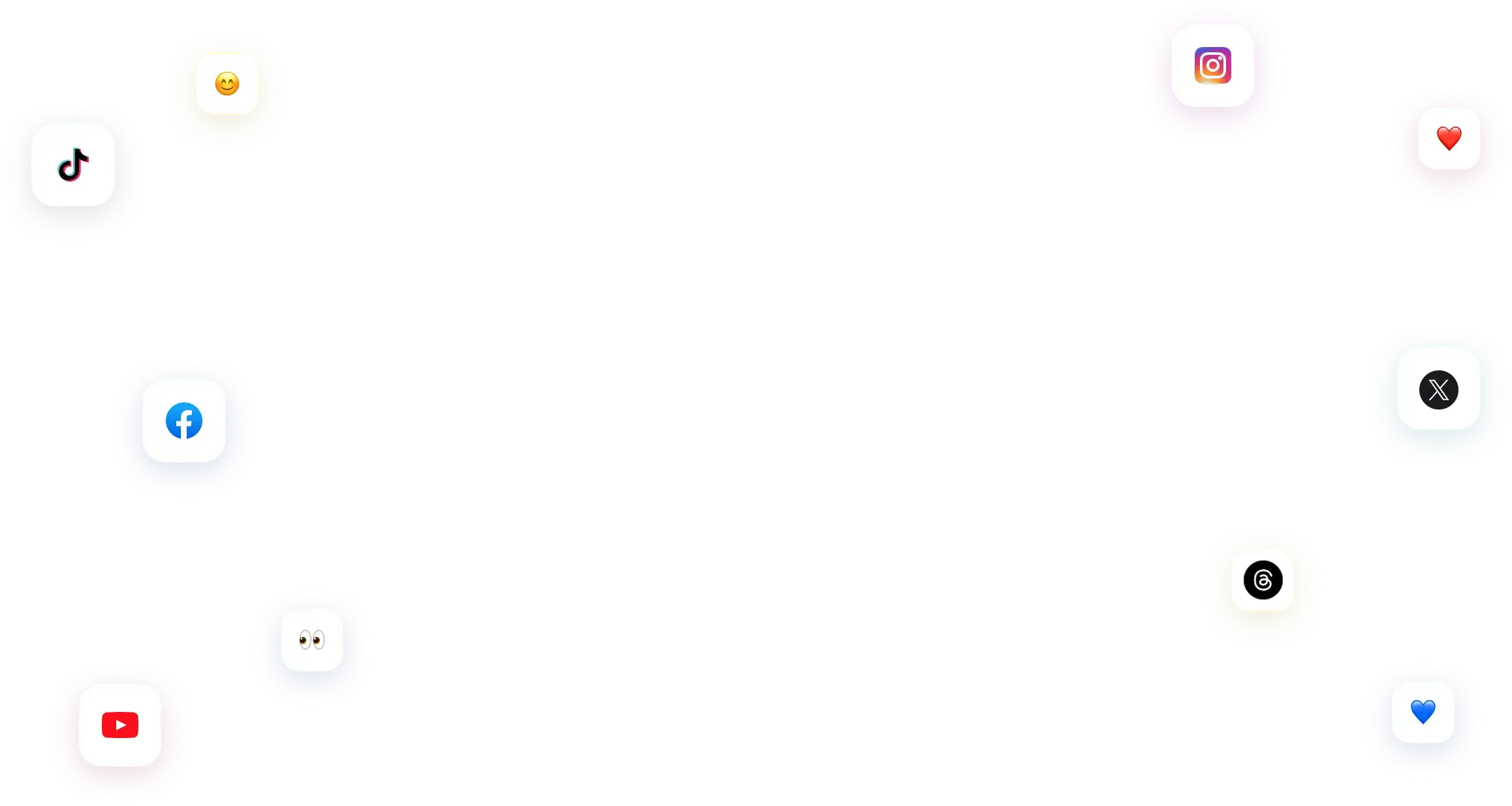
You have many things to do.
Let us help you with social media.
Use our free plan to build momentum for your social media presence.
Or skip ahead and try our paid plan to scale your social media efforts.
P.S. It will be a piece of cake 🍰 with Vista Social
Subscribe to our Newsletter!
To stay updated on the latest and greatest Social Media news. We promise not to spam you!

